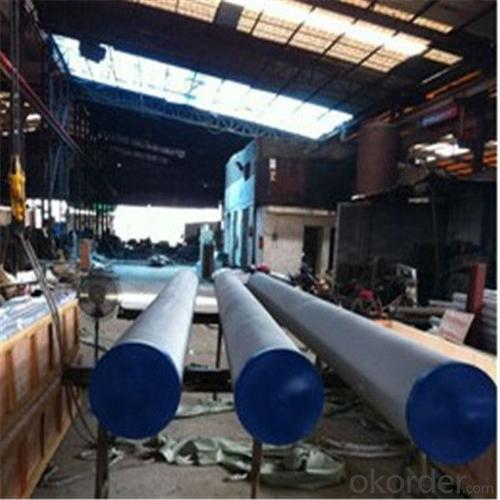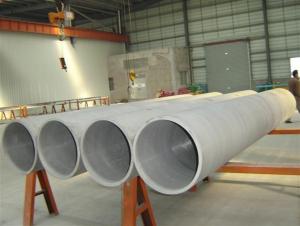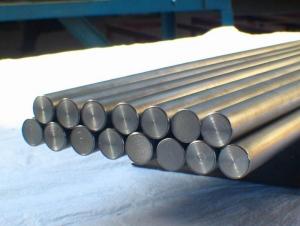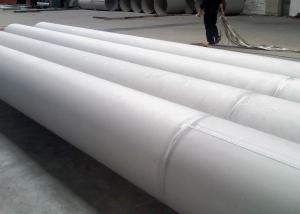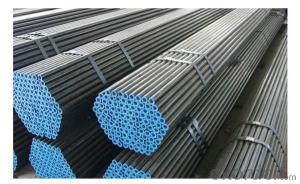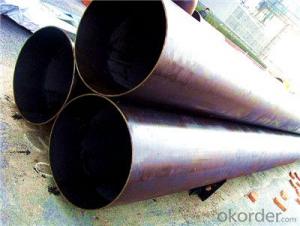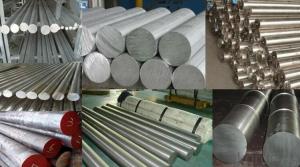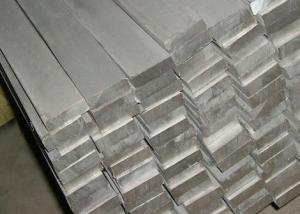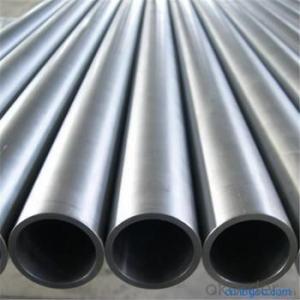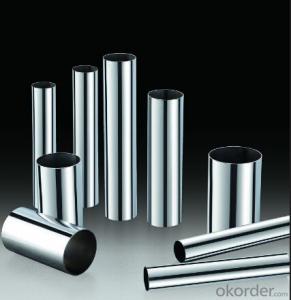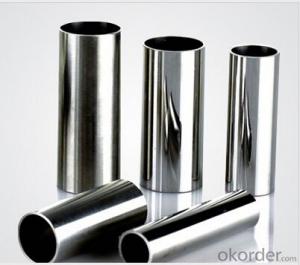A213 tp316l Stainless Steel Pipes/aisi 904l stainless steel pipe
- Loading Port:
- Shanghai
- Payment Terms:
- TT OR LC
- Min Order Qty:
- 6 m.t.
- Supply Capability:
- 25000 m.t./month
OKorder Service Pledge
OKorder Financial Service
You Might Also Like
Specification
316 stainless steel pipe
Product Description
Nominal Diameter(mm) | Outside Diameter(mm) | Nominal Wall Thickness (mm) | |||
N.B | NPS | SCH5S | SCH10S | SCH40S | |
8 | 1/4″ | 13.72 | 1.65 | 2.24 | |
10 | 3/8″ | 17.15 | 1.65 | 2.31 | |
15 | 1/2″ | 21.34 | 1.65 | 2.11 | 2.77 |
20 | 3/4″ | 26.67 | 1.65 | 2.11 | 2.87 |
25 | 1″ | 33.4 | 1.65 | 2.77 | 3.38 |
32 | 1-1/4″ | 42.16 | 1.65 | 2.77 | 3.56 |
40 | 1-1/2″ | 48.26 | 1.65 | 2.77 | 3.68 |
50 | 2″ | 60.33 | 1.65 | 2.77 | 3.91 |
65 | 2-1/2″ | 73.03 | 2.11 | 3.05 | 5.16 |
80 | 3″ | 88.9 | 2.11 | 3.05 | 5.49 |
90 | 3-1/2″ | 101.6 | 2.11 | 3.05 | 5.74 |
100 | 4″ | 114.3 | 2.11 | 3.05 | 6.02 |
125 | 5″ | 141.3 | 2.77 | 3.4 | 6.55 |
150 | 6″ | 168.28 | 2.77 | 3.4 | 7.11 |
200 | 8″ | 219.08 | 2.77 | 3.76 | 8.18 |
Tolerance :
Standard | GB151 ASTM JIS DIN | ||
OD | I | II | |
<Ø25---≥Ø50 | ±0.18 | ±0.30 | |
≥Ø25---≤Ø89 | ±0.30 | ±0.45 | |
≥Ø89---≤Ø129 | ±0.51 | ±0.80 | |
Thickness | All specifications±0.5% | ||
Length | All specifications±6 | ||
Straightness | All specifications≤2/1000 | ||
Chemical Composition:
Grade and Main chemical composition% | |||||||||
C | Si | Mn | P≤ | S≤ | Cr | Mo | Ni | Other | |
201 | ≤0.15 | ≤1.00 | 5.5-7.5 | 0.06 | 0.03 | 16-18 | - | 3.5-5.5 | N≤0.25 |
202 | ≤0.15 | ≤1.00 | 7.5-10.0 | 0.06 | 0.03 | 17-19 | - | 4.0-6.0 | N≤0.25 |
301 | ≤0.15 | ≤1.00 | ≤2.00 | 0.045 | 0.03 | 16-18 | - | 6.0-8.0 | - |
302 | ≤0.15 | ≤1.00 | ≤2.00 | 0.045 | 0.03 | 17-19 | - | 8-10.0 | - |
303 | ≤0.15 | ≤1.00 | ≤2.00 | 0.2 | ≥0.015 | 17-19 | ≤0.6 | 8.0-10.0 | - |
304 | ≤0.08 | ≤1.00 | ≤2.00 | 0.045 | 0.03 | 18-20 | - | 8-10.5 | - |
304L | ≤0.03 | ≤1.00 | ≤2.00 | 0.045 | 0.03 | 18-20 | - | 9-13 | - |
305 | ≤0.12 | ≤1.00 | ≤2.00 | 0.045 | 0.03 | 17-19 | - | 10.5-13 | - |
309S | ≤0.08 | ≤1.00 | ≤2.00 | 0.045 | 0.03 | 22-24 | - | 12-15 | - |
310S | ≤0.08 | ≤1.5 | ≤2.00 | 0.045 | 0.03 | 24-26 | - | 19-22 | - |
316 | ≤0.08 | ≤1.00 | ≤2.00 | 0.045 | 0.03 | 16-18 | 2-3 | 10-14 | - |
316L | ≤0.03 | ≤1.00 | ≤2.00 | 0.045 | 0.03 | 16-18 | 2-3 | 12-15 | - |
317 | ≤0.08 | ≤1.00 | ≤2.00 | 0.045 | 0.03 | 18-20 | 3-4 | 11-15 | - |
317L | ≤0.03 | ≤1.00 | ≤2.00 | 0.045 | 0.03 | 18-20 | 3-4 | 11-15 | - |
321 | ≤0.08 | ≤1.00 | ≤2.00 | 0.045 | 0.03 | 17-19 | - | 9-13 | Ti≥5×C |
405 | ≤0.08 | ≤1.00 | ≤1.00 | 0.04 | 0.03 | 11.5-14.5 | - | ≤0.6 | AL0.1-0.3 |
420F | 0.26-0.4 | ≤1.00 | ≤1.25 | 0.06 | ≥0.15 | 12-14 | ≤0.6 | ≤0.6 | - |
430 | ≤0.12 | ≤0.75 | ≤1.00 | 0.04 | 0.03 | 16-18 | - | ≤0.6 | |
Definition of stainless steel(Adopted form Wikipedia)
In metallurgy, stainless steel, also known as inox steel or inox from French "inoxydable",
is defined as a steelalloy with a minimum of 10.5% to 11% chromium content by mass.
Stainless steel does not readily corrode, rust or stain with water as ordinary steel does,
but despite the name it is not fully stain-proof, most notably under low oxygen, high salinity,
or poor circulation environments. It is also called corrosion-resistant steel or CRES
when the alloy type and grade are not detailed, particularly in the aviation industry.
There are different grades and surface finishes of stainless steel to suit the environment
the alloy must endure. Stainless steel is used where both the properties of steel
and resistance to corrosion are required.
Surface Finish :
Surface finish | Characteristics and application |
No.2B | The surface brightness and flatness of no2B is better than no2D. then through a special surface treatment to improve its mechanical properties, No2B could nearly satisfy comprehensive uses. |
No.3 | Polished with abrasive belt of git#100-#200, have better brightness with discontinuous coarse stria, used as inner and external ornaments for building, electrical appliances and kitchen utensils etc. |
No.4 | Polished with abrasive belt of grit #150-#180,have better brightness with discontinuous coarse stria, but thinner than No3, are used as bathtub buildings inner and external ornaments electrical appliances kitchen utensils and food processing equipment etc. |
HL | Polished with abrasive belt of grit #150-#320 on the NO.4 finish and has continuous streaks, mainly used as buildings ornaments elevators, door of building, frontal plate etc. |
BA | Cold rolled, bright annealed and skin-passed, the product have excellent brightness and good reflexivity like mirror, kitchen apparatus, ornament etc. |
8K | The product have excellent brightness and prefer reflexivity can to be the mirror. |
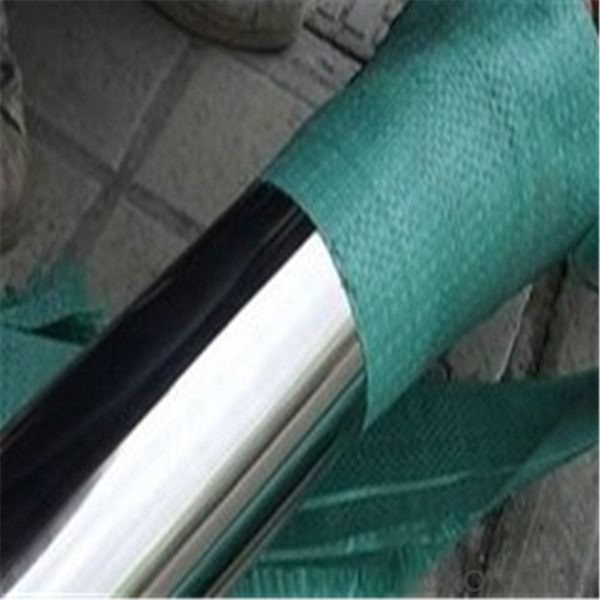
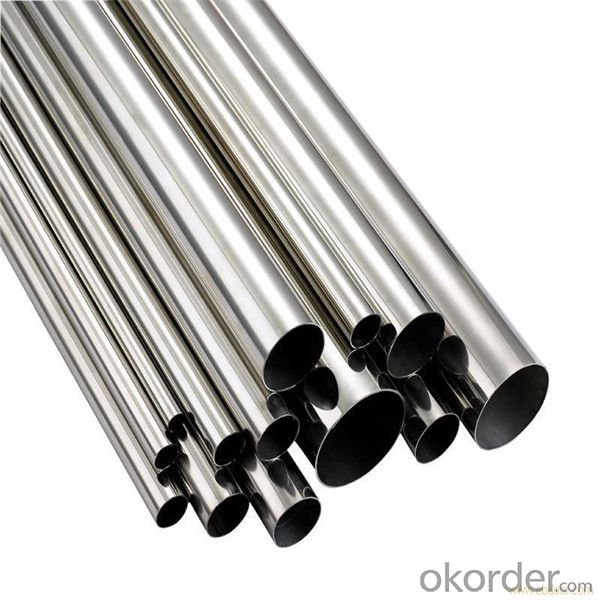
- Q: Are stainless steel pipes suitable for desalination plants?
- Yes, stainless steel pipes are suitable for desalination plants. Desalination plants are facilities designed to remove salt and other impurities from seawater or brackish water to produce freshwater. These plants require pipes that can withstand the harsh conditions of the desalination process, which involves high pressure, high temperatures, and exposure to corrosive substances. Stainless steel pipes are an excellent choice for desalination plants due to their inherent corrosion resistance properties. Stainless steel contains a minimum of 10.5% chromium, which forms a thin protective oxide layer on the surface of the material, preventing corrosion and ensuring longevity. This oxide layer acts as a barrier, protecting the steel from the corrosive effects of seawater, brine, and other chemicals used in the desalination process. Furthermore, stainless steel pipes are highly durable and can withstand extreme temperatures and pressures without compromising their structural integrity. They are also resistant to scaling and fouling, which are common issues in desalination plants due to the high concentration of minerals and salts in the water. In addition to their corrosion resistance and durability, stainless steel pipes are also hygienic and easy to clean, making them suitable for desalination plants that require regular maintenance and cleaning to ensure efficient and reliable operation. Overall, stainless steel pipes are an ideal choice for desalination plants due to their corrosion resistance, durability, and ease of maintenance. They can effectively handle the demanding conditions of the desalination process, ensuring the production of high-quality freshwater.
- Q: Can stainless steel pipes be used for chemical pumps?
- Indeed, chemical pumps can utilize stainless steel pipes. Renowned for its corrosion resistance, stainless steel proves to be an appropriate substance for managing diverse chemicals. Its ability to endure the corrosive properties of numerous chemicals safeguards against contamination of the fluids being pumped. Furthermore, stainless steel pipes provide commendable mechanical strength and endurance, rendering them suitable for chemical pumps that necessitate reliability and sustained effectiveness. Nonetheless, it is crucial to take into account the precise demands of the chemicals being pumped and seek guidance from specialists or manufacturers to guarantee the compatibility of the chosen stainless steel with the specific chemicals and operational circumstances.
- Q: What are the different types of stainless steel pipe tees?
- There are several different types of stainless steel pipe tees, each designed for specific applications and requirements. 1. Equal Tee: This type of tee has three outlets of the same size, forming a 90-degree angle. It is commonly used to branch off or combine flow in a pipeline with equal diameters. 2. Reducing Tee: As the name suggests, a reducing tee has one outlet smaller than the other two. It is used to connect pipes of different sizes, allowing for a smooth transition in the flow of fluids or gases. 3. Barred Tee: This tee has a bar welded across the branch opening, providing additional support and reinforcement. It is commonly used in high-pressure or high-temperature applications to prevent stress concentration and potential failure. 4. Lateral Tee: A lateral tee has one outlet at a 45-degree angle, allowing for a branch connection at a different direction. It is often used in situations where a pipeline needs to be diverted or connected at an angle. 5. Cross Tee: A cross tee has four outlets forming a cross-shaped configuration. It is used when there is a need to split or combine flow in multiple directions, commonly found in complex piping systems. 6. Unions and Socket Weld Tee: These types of tees have sockets or unions at the branch connection, allowing for easy disassembly and maintenance. They are often used in applications where regular inspection, cleaning, or replacement is required. 7. Threaded Tee: Threaded tees have threaded branch connections, which can be screwed onto the pipe without the need for welding. They are commonly used in low-pressure applications or when frequent disassembly is required. Each type of stainless steel pipe tee offers specific advantages and is selected based on the requirements of the particular piping system, such as flow rates, pressure, temperature, and compatibility with the fluids or gases being transported.
- Q: Are stainless steel pipes suitable for breweries?
- Yes, stainless steel pipes are highly suitable for breweries. They are corrosion-resistant, easy to clean, and maintain the quality of the beer by preventing contamination. Additionally, stainless steel pipes can withstand high temperatures and pressures, making them ideal for the brewing process.
- Q: What does "stainless steel pipe" DN mean?
- Nominal diameter is the size of all piping accessories in the piping system. The nominal diameter is a convenient round integer for reference and is not strictly related to the processing size. The nominal diameter follows the letter "DN" followed by a number sign.
- Q: Are stainless steel pipes suitable for food storage facilities?
- Stainless steel pipes are a perfect fit for food storage facilities. The food industry widely embraces stainless steel due to its many advantageous properties. Firstly, stainless steel's resistance to corrosion is crucial in food storage facilities where exposure to moisture and various food products is common. This resistance guarantees that the pipes will not rust or deteriorate over time, thus preventing any potential contamination of the stored food. Furthermore, stainless steel pipes are easy to clean and maintain, making them the ideal choice for food storage facilities that must comply with strict hygiene standards. The smooth and non-porous surface of these pipes prevents the buildup of bacteria, ensuring that the stored food remains safe and uncontaminated. Stainless steel is also a non-reactive material, meaning it does not release any harmful substances into the food. This is particularly important in food storage facilities, as it guarantees the preservation of the integrity and quality of the stored food products. Additionally, stainless steel pipes possess excellent strength and durability, enabling them to withstand the high pressures and temperature fluctuations commonly encountered in food storage facilities. This ensures that the pipes will not fail or break, providing a dependable and long-lasting solution. To conclude, stainless steel pipes are highly suitable for food storage facilities due to their resistance to corrosion, ease of cleaning, non-reactive nature, and strength. They create a safe and hygienic environment for storing food, thereby ensuring the preservation of the integrity and quality of the stored products.
- Q: What is the average weight of a stainless steel pipe?
- The weight of a stainless steel pipe can differ based on its size, wall thickness, and length. Various dimensions and grades are accessible for stainless steel pipes, which can impact their weight. However, in general, stainless steel pipes are typically heavier compared to pipes made from alternative materials due to the density of stainless steel. The weight of a stainless steel pipe can range from a few kilograms to several hundred kilograms per meter, depending on the factors mentioned earlier. To accurately determine the exact weight of a stainless steel pipe for a specific application, it is crucial to refer to the product specifications or consult a supplier.
- Q: Are stainless steel pipes resistant to sea water corrosion?
- Yes, stainless steel pipes are highly resistant to sea water corrosion due to their inherent properties such as chromium content that forms a protective film on the surface, preventing corrosion and ensuring durability in marine environments.
- Q: Are stainless steel pipes suitable for heat recovery systems?
- Yes, stainless steel pipes are highly suitable for heat recovery systems. Stainless steel has excellent heat resistance and corrosion resistance properties, making it an ideal choice for transporting hot fluids or gases in heat recovery systems. Additionally, stainless steel pipes offer high strength and durability, ensuring long-term performance and reliability in these applications.
- Q: What are the factors to consider when selecting stainless steel pipes for a specific application?
- When selecting stainless steel pipes for a specific application, several factors need to be considered to ensure the right choice is made. 1. Corrosion Resistance: Stainless steel is known for its exceptional resistance to corrosion, but different grades offer varying levels of protection against specific corrosive environments. The type of corrosive agents present in the application, such as chemicals, moisture, or high temperatures, should be carefully evaluated to select a stainless steel grade that can withstand them effectively. 2. Temperature and Pressure: Stainless steel pipes are used in a wide range of temperature and pressure conditions. The selected grade must have the necessary strength and resistance to handle the specific temperature and pressure levels required by the application. Higher temperatures may require grades with increased heat resistance, while high-pressure environments may benefit from pipes with higher tensile strength. 3. Material Compatibility: In some applications, stainless steel pipes may come into contact with other materials or substances, such as liquids or gases. It is crucial to consider the compatibility of the stainless steel with these materials to avoid any potential chemical reactions, contamination, or degradation. Compatibility testing or consulting with experts can help determine the best choice of material. 4. Size and Dimensions: The size and dimensions of the stainless steel pipes should match the requirements of the application. This includes considering the diameter, thickness, and length of the pipes. Proper sizing ensures optimal flow rates, structural integrity, and ease of installation. 5. Cost: Cost is always a factor to consider in any decision-making process. Different stainless steel grades vary in price, and it is essential to balance the desired properties with the available budget. While cost should not be the sole determining factor, it is important to find a stainless steel pipe that meets the required specifications without exceeding the allotted budget. 6. Standards and Certifications: Depending on the application, certain standards and certifications may be required, such as ASTM, ASME, or ISO. These standards ensure that the stainless steel pipes meet specific quality and performance criteria. It is crucial to select pipes that comply with the necessary standards and have appropriate certifications to ensure reliability and safety. 7. Maintenance and Durability: Consider the maintenance requirements and expected lifespan of the stainless steel pipes. Some applications may require regular cleaning, inspection, or maintenance, while others may need pipes with long-term durability and resistance to wear and tear. By carefully evaluating these factors, one can make an informed decision when selecting stainless steel pipes for a specific application, ensuring they meet the necessary performance, quality, and safety requirements.
Send your message to us
A213 tp316l Stainless Steel Pipes/aisi 904l stainless steel pipe
- Loading Port:
- Shanghai
- Payment Terms:
- TT OR LC
- Min Order Qty:
- 6 m.t.
- Supply Capability:
- 25000 m.t./month
OKorder Service Pledge
OKorder Financial Service
Similar products
Hot products
Hot Searches
Related keywords


